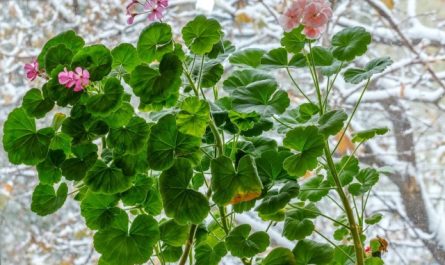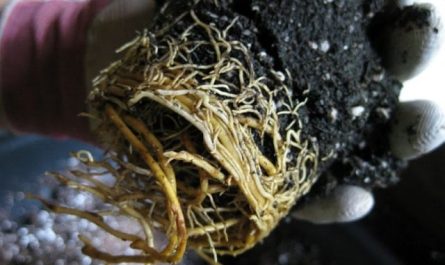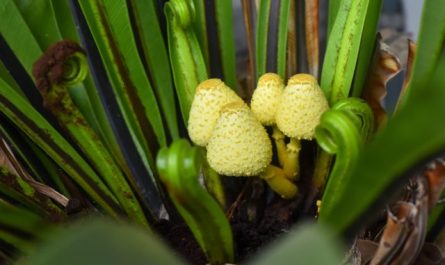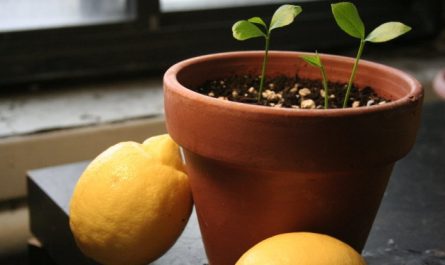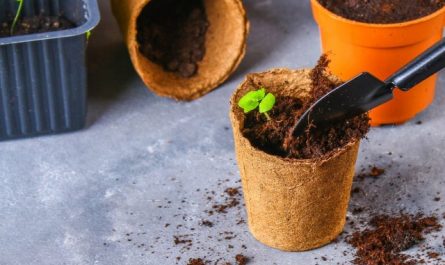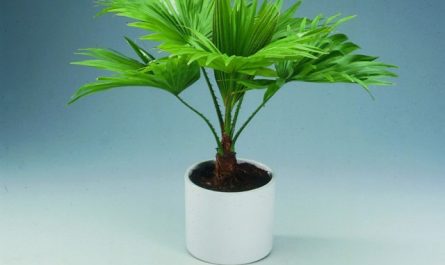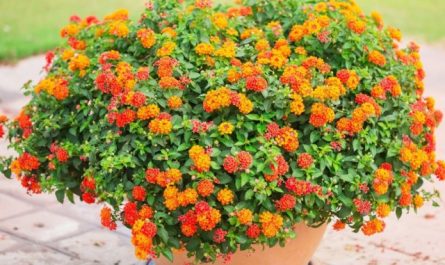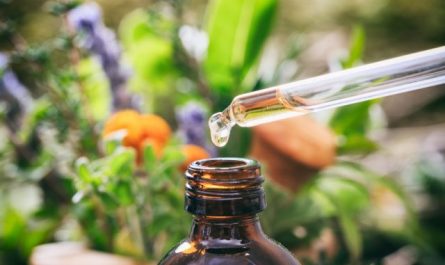A wonderful plant that will suit any room is the Decembrist (Schlumbergera). It is also called zygocactus, Schlumbergera, Christmas cactus, and the popular name is Christmas cactus. This is a very common indoor plant on our windowsills. The Christmas cactus is quite unpretentious, but not all gardeners manage to achieve its spectacular flowering. Read this article to learn how to properly care for this plant at home.

General information about the Decembrist
The Decembrist’s homeland is the humid forests of eastern Brazil. It is an epiphytic (living on tree trunks) cactus, with flat, branched stems consisting of numerous flat segments with 2-4 teeth along the edges.
Numerous medium-sized flowers of pink and red colors develop at the ends of the segments. It blooms in December-January. During budding, which begins around the end of October, the plant should not be touched or moved to avoid the buds falling off; at the same time, good watering, spraying and fertilizing in the form of weak solutions of mullein are necessary. After flowering, watering is reduced, the plant rests.
Care and Growing Requirements
Location. These plants require diffused or reflected sunlight. For optimal growth, the Decembrist requires 75% to 85% sunlight. Increasing the light may cause stunted growth and/or yellowing (chlorosis) of the stem edges. Plants are best placed near a sunny window in light shade from curtains or other plants.
Decembrists are quite tolerant of temperature. They will survive at temperatures from +2°C to +38°C. However, the plants will grow better within the range of +18°C to +30°C.
Lighting. Bright light.
Watering. Decembrists are not as succulent as many other types of cacti. They require almost the same watering regime as deciduous plants.
The Decembrist should be watered when the top layer of soil in the pot is dry. Drainage in the pot will allow excess water to flow out through the hole at the bottom, which will prevent over-watering.
Feeding. Schlumbergera needs relatively little fertilizing. When grown in greenhouses, fertilizing is done once a week. At home, fertilizing is done 2-4 times a year. The fertilizer should be a high-quality water-soluble mixture of nitrogen with balanced potassium and phosphorus and a small amount of other elements.
A well-balanced 20-20-20 (NPK) mixture is best. Evenly watering the Decembrist with plain water enriches the soil with soluble salts. However, fertilizing should be stopped a month before buds form.
Air humidity. Moderate.
Formation. Pinching off the Decembrist stem segments improves the shape of the plant. It is recommended to do this after flowering. You need to choose a point of separation, pinch the lower stem segment between the index finger and thumb of one hand, and separate the upper one with a rotating motion. In this way, one or two segments of each stem should be separated. Never cut off the segments!
Pinching the Decembrist has a double effect. Firstly, it will bloom more abundantly. Secondly, it will form stronger stems capable of bearing more flowers.
A properly formed and cared for zygocactus has a long lifespan. Some zygocactuses bloom and grow for 20 years or more. The stem of the plant becomes woody during this time.
By grafting, you can get a standard form of Decembrist, which blooms unusually strongly. The cactus Peireskia is used as a rootstock (the plant onto which it is grafted). The top of the Peireskia is cut off with a sharp knife, the remaining stem is slightly split with a knife and a cutting of 2-3 segments of the Zygocactus is inserted into the split. It is secured with a long thorn or prickle of the Peireskia and the grafting site is tied with a woolen thread. When the cuts grow together, the leaves are removed from the Peireskia and the bandage is removed. When the Zygocactus develops a crown, it must be tied to a peg to prevent it from breaking off.
In soil culture it grows in a mixture of turf and leaf soil with an admixture of sand (1:1:1), sometimes peat is added (1 part) or it is grown in peat alone.
Transfer. Zygocactus needs to be replanted before it starts growing and before it starts budding.
soil. Zygocacti grow best in organic peat soils. The soil should be light and breathable to avoid diseases and pest infestations. Soil acidity in the range of 5,5 to 6,5 is recommended.

Zygocactus Care Calendar
Winter. In December and January, the zygocactus will delight you with its flowers, similar to a bell, but with pointed petals. Water the Decembrist regularly and apply fertilizer intended for cacti. Do not move the zygocactus under any circumstances. In February, gradually reduce watering and keep the plant in a cool room. This so-called dormant period will last until mid-late March.
Spring. At the end of April or in May, you can propagate and transplant the zygocactus. The easiest way to propagate the plant is by stem parts consisting of several segments. Dry the cut Decembrist cuttings for 2-3 days until a glassy film forms on the cut surface. Then root in special soil.
The soil mixture for zygocactus should consist of leaf, turf soil and sand in a ratio of 2:1:1. Add a small amount of crushed charcoal to the prepared mixture. Before planting, put expanded clay gravel on the bottom of the pot for drainage.

Summer. It is best to take the zygocactus out into the fresh air, for example, put it on the balcony. The plant requires diffused light, so protect it from direct sunlight. Water the Decembrist generously with soft water as the soil dries out.
Autumn. Preparing the Decembrist before flowering. Gradually reduce the amount of water used for watering and move the zygocactus to a cool place (try to ensure the air temperature is no higher than 10-14 °C). Coolness and limited watering enhance the development of buds. In November, when the buds begin to form, increase watering and move the plant to a warmer place (air temperature not less than 15 °C).
Reproduction of Decembrist
Propagated by cuttings with 2-3 segments. Usually Decembrist cuttings easily take root at any time of the year. After cutting, the cuttings are dried a little and placed, without deepening, on moist soil. You can cover them with a glass jar on top, not forgetting to periodically ventilate.
In any case, the volume of the pot or other container for planting the Decembrist should not greatly exceed the volume of the root system in its straightened form, but it should be taken into account that drainage will take up some space in the pot. If the cactus is sick, the container should be slightly smaller in size than the volume of the root system.
After flowering, plants often look terrible. Some of the flowering plants look dried out. Botanists say that the shriveled stems of the Schlumbergera do not mean that the plant needs water, but rather that its roots have rotted, or some other stress has affected it. Try to pull on the shriveled plant, and if its roots have rotted, it will easily come out of the soil. If the roots of the Decembrist are intact, put the plant in a darker place and reduce watering.
Specific cultural requirements
In order to form flowers, this cactus requires the fulfillment of some specific conditions that are not typical for its close relatives, for example:
- Schlumbergeras require a humid atmosphere, but do not like stagnant moisture in the pot, especially when kept cool;
- Frequent spraying and periodic washing under running warm water are useful;
- Regular root and foliar feeding of the Decembrist with a weakly concentrated solution of complex mineral fertilizers is recommended;
- does not like either cold or heat;
- The crown of the Decembrist is formed by removing too long and unbranched shoots (pruning at the base of the segment);
- During the budding period, you cannot abruptly change the conditions of the plant (rearrange, change the watering regime, temperature).
Diseases and pests of Schlumbergera
Schlumbergera suffers from fungal diseases and insect pests. Of the fungal diseases, Schlumbergera most often suffers from fusarium, phytium and late blight.
The first disease occurs mainly when infected through wounds on the surface of the stems. To combat it, fungicides are used, which include the active components chlorothalonil and benomyl.
Phytium and phytophthora are carried with contaminated soil and primarily affect the root collar. The most obvious sign of the disease is the mass shedding of segments, wilting of the plant in wet soil. The flower may acquire a pale or gray color. For treatment, you can use such drugs as “Skor”, “Topaz”, “Maxim” and “Vitaros”.
Of the insects, spider mites threaten the plant. These are very small arachnids, similar to slowly moving dots of reddish, brownish or yellowish color. The plant becomes covered with a rusty coating. To combat these pests, special preparations against mites “Neoron”, “Aktellik”, “Fitoverm” are used.
If white cottony lumps appear between the Decembrist shoots, it means that the Schlumbergera has been attacked by a mealybug. To combat this parasite, “Aktara” is suitable, as well as any other preparations for insect pests.
Our Decembrist has been growing for 2 years, but, strangely enough, it has not bloomed yet, it produces beautiful leaves, but does not produce flowers. Does this indoor plant bloom for you?




